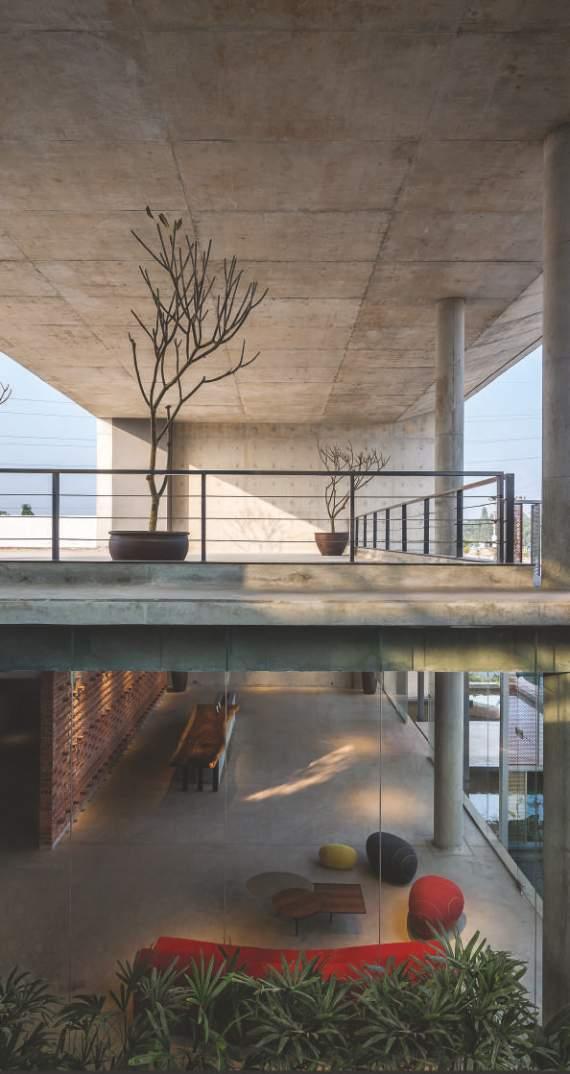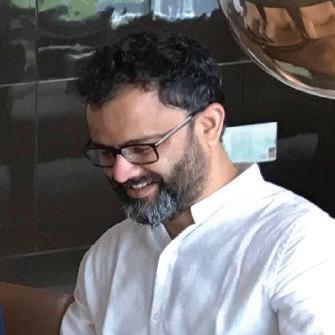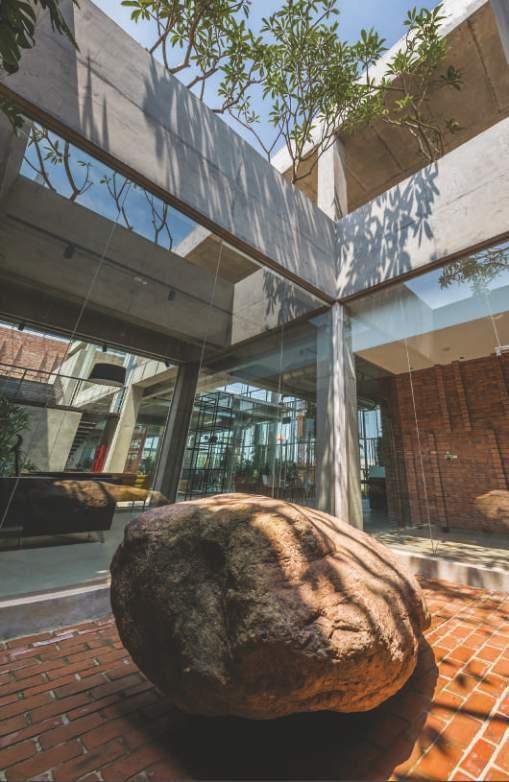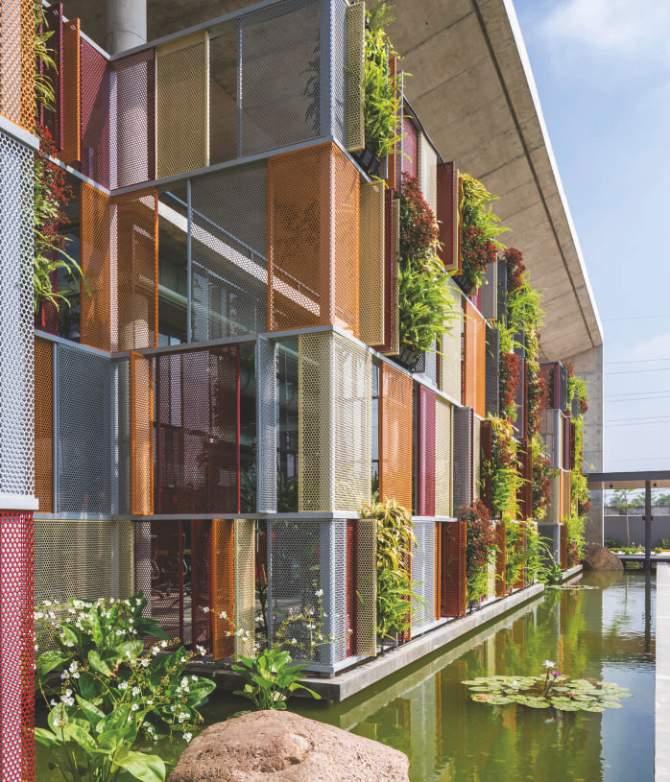
3 minute read
An amalgamation of modern finesse with rustic charm
An administrative building and factory based in Hanoi, Vietnam designed by VDGA Architects was recently conferred with the Green Architecture Award at the 28 th edition of JK AYA Architect of the Year Awards.
A40,000 sq ft. (Phase-1) corporate office cum factory set-out in the city of Hanoi, Vietnam, explores the rustic and discreet material palette aligning the client requirements to the site context. Being a corporate office and factory setup within the same campus (in fact adjoining each other), spaces were planned introvert. A series of courts interwoven in the work zones breathe freshness in the ambience. A gaze across the office presents one with the pleasing view of landscape and water instead of the blind partitions and decorative interiors.
Advertisement

The whole building is divided into front and back bays. The front bay of the building adjoins the factory floor beyond, separated from it by a long brick wall. The reception area is a bold statement in itself. The brick wall as the backdrop of the wooden reception desk is distinct. The court basks in brilliant shadows casted by the vertical brick offsets in the plain unobtrusive brick walls. As one traverses through the passage, a series of courts are encountered along. The partition walls for all the cubicles and workspaces give way to transparent glassw . Hence the spaces seem interwoven into each other looking into all the intermediate courts. The mass is a simple form-finished concrete envelope with long colourful perforated metal screen adorned with landscape. Grid Courtyards not only bind the building horizontally but also enable visual connectivity along the vertical axis, looking into each other and lack of dead partitions enhance the same. Deepak Guggari, Principal Architect, Varsha & Deepak Guggari Associates
The mass is a simple form finished concrete envelope with a long perforated metal screen adorned with landscape in and out on the front facade and the landscape mounds cuts the linearity

The court basks in brilliant shadows casted by the vertical brick offsets in the plain obtrusive brick walls. A tall tree erupting from the brick floor balances the starkness of the bricks

planning while carving out the quintessential courtyards is the strength of design.
Special features Hanoi experiences a warm humid sub-tropical climate with enough rainfall while winters are dull and hazy. Hence the effort was to create an ambience which would do justice
to the interior spaces both in summers as well as winters. Series of ‘internal courts’ as many as eight keep the office areas fresh by bringing in enough natural light even when the sky is dull. A long perforated panel’s screen (the breathing wall, as we call it) adorned with landscape in and out on the front facade cuts off the glare in the summer months. This screen also negates the use of blinds/curtains in the front façade. The panels painted in different hues stand-out in the otherwise restrained concrete façade.
Materials of construction detail Demand for understated interiors in the tropical-temperate climatic zone of Vietnam, allowed us to fully utilise the beauty of earthy materials. The strong sunlight beautifully enhances the material palette. Be it the vacuum dewatered floor, the brick wall or the raw metal, light reflects brilliantly through them. Brick is the main element of interior design in this office space. Various forms and hues of brick make for a unique element in the interior spaces. The twisted brick wall forms the reception backdrop and it drew inspiration from a visit to a local brick kiln in Hanoi. The building envelope in form finished concrete offers a subtle contrast to the fierce red of the brick. The floating MS staircase imparts the lightness to the circulating areas. Customized stretched metal ropes in place of staircase railing offer the transparency.
There has been no use of boastful materials and whole palette is locally sourced while fully exploiting the abundantly available resources and local labor. Usual interior elements such as cladding, carpentry, POP false ceiling, painting and flooring work have no role to play in this project and are completely eliminated.
The strong sunlight enhances these materials. Be it the IPS cement floor, the brick wall or the raw metal, light reflects brilliantly through them

A perforated panel screen on the front facade adorned with local landscape cuts off the glare in the summer months yet facilitating the air movement and visual connectivity outside










